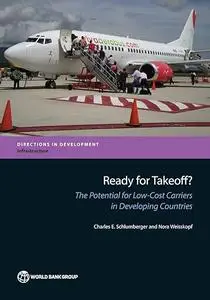
Free Download Nora Weisskopf, "Ready for Takeoff?: The Potential for Low-Cost Carriers in Developing Countries"
English | 2014 | pages: 256 | ISBN: 1464802823 | EPUB | 11,5 mb
The emergence of Low-Cost Carriers (LCCs) has been a key catalyst for the development of the aviation industry in the last decade. This book identifies various definitions that have been applied to describe the LCC business model. In essence the majority of researchers define LCCs as carriers, which, through a variety of operational processes, have achieved a cost advantage over Full-Service Carriers. The key characteristics that can generally be found in LCCs are: (i) Simple service offering; (ii) Short-haul, point-to-point route structure; (iii) Usage of secondary airports; (iv) High aircraft utilization; (v) Fleet commonality and generally newer, more fuel-efficient fleet; (vi) High-density one-class configuration; (vii) Low-cost distribution; and (viii) High labor utilization. The case of the East Africa Community was chosen for further study. Although a preliminary assessment, the analysis indicates that, given there is limited traffic domestically and in the region. In order for LCCs to capitalize on these opportunities, stakeholders in the aviation industry will have to proactively address some of the challenges highlighted above. This will in turn create the proper environment for LCCs to emerge. In the case of the East Africa Community as well as other developing countries, measures which can be taken to capitalize on these opportunities include: (i) the fostering of a competitive environment by removing any market distortions (for example, monopolistic state-owned carriers, restrictive air transport policies, bad governance); (ii) investments, where required, in air transport and air traffic control infrastructure, in particular Communications, Navigation Surveillance (CNS) infrastructure (iii) improvements in safety and security oversight through capacity building efforts in civil aviation authorities (for example, training programs) and airport operators and; (iv) reduction in input costs (for example, fuel and airport charges and taxes).
